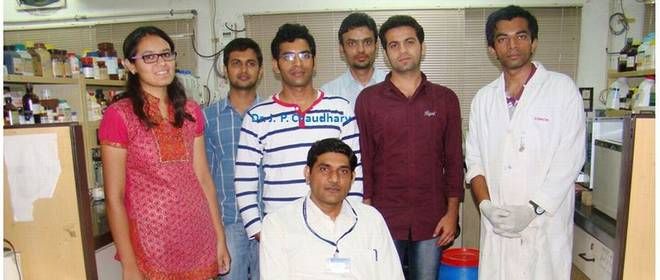Graphene-based nanomaterial derived from seaweed effectively treats industrial wastewater
Published on by Water Network Research, Official research team of The Water Network in Academic
A team of Indian scientists has developed a graphene-based nano-material drawn from seaweed for effective treatment of toxic wastewater without using any chemicals.
 Membrane-based filtration processes are generally used to treat industrial wastewater but can’t usually fully filter out heavy metal contaminants. In order to address this problem, processes that use activated carbon, graphene or carbon nano tubes are being developed as carbon-based processes can help remove dyes and heavy metals through adsorption. Researchers at the Central Salt and Marine Chemicals Research Institute, Bhavnagar, have developed a 'green' process by using seaweed as starting material. They have synthesized a graphene-iron sulfide nanocomposite from an abundant seaweed - Ulva fasciata – through direct pyrolysis technique.
Membrane-based filtration processes are generally used to treat industrial wastewater but can’t usually fully filter out heavy metal contaminants. In order to address this problem, processes that use activated carbon, graphene or carbon nano tubes are being developed as carbon-based processes can help remove dyes and heavy metals through adsorption. Researchers at the Central Salt and Marine Chemicals Research Institute, Bhavnagar, have developed a 'green' process by using seaweed as starting material. They have synthesized a graphene-iron sulfide nanocomposite from an abundant seaweed - Ulva fasciata – through direct pyrolysis technique.
Seaweeds are known as carbon sinks. Earlier studies show that biomass of Ulva fasciata can be directly employed for adsorbing copper and zinc ions from water but the uptake capacities were relatively low. This problem has been overcome by deriving thin carbon sheets from seaweed at very high temperature. These graphene sheets are doped with iron. The nanocomposite obtained from seaweed has shown very high adsorption capacity for various cationic and anionic dyes as well as lead and chromium.
The nanocomposite can be used in up to eight cleaning cycles, with only nominal loss of its adsorption capacity. Even mixed dyes could be adsorbed. A maximum adsorption capacity of 645 mg per gram for lead was achieved at neutral pH. This is the said to be the highest ever reported for any biomass derived carbon material. It could also remove highly toxic hexavalent chromium from wastewater.
The nanocomposite was also tested by depositing it on a commercial filter paper and using it in a customized flow cell in continuous filtration mode. Just five minutes of treatment could render highly toxic black dye solution into colorless water.
Attached link
https://www.graphene-info.com/indian-team-develop-graphene-based-water-cleaning-process-based-seaweedMedia
Taxonomy
- Water
- Treatment
- Industrial Wastewater Treatment
- Water Reclamation
- Filtration
- Technology
- Filters
- Filtration Solutions
- Industrial Water Treatment
- Toxins
- Nano Materials
- Nanotechnology
- Materials
- Nanofiltration